Name Emily Jacir Role Artist | Books Workplace | |
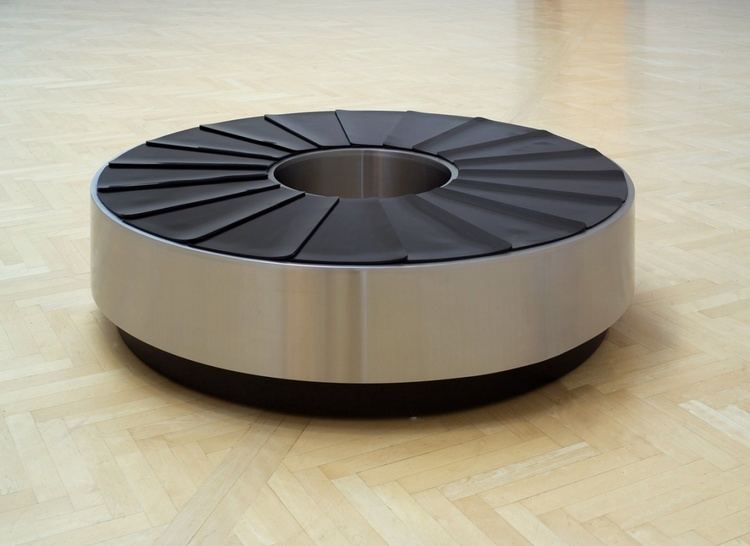 | ||
Education | ||
Emily jacir europa
Emily Jacir (Arabic: املي جاسر), is a Palestinian artist and filmmaker. Born in Bethlehem in 1972, Jacir spent her childhood in Saudi Arabia, attending high school in Italy. She attended Memphis College of Art and graduated with an art degree. She divides her time between Rome, Italy and Ramallah.
Contents
- Emily jacir europa
- Artist emily jacir brings the palestinian experience to the venice biennale
- Recent Juries
- Awards
- Memorial to 418 Palestinian Villages Destroyed Depopulated and Occupied by Israel in 1948 2001
- Where We Come From 2001 2003
- Crossing Surda 2003
- Accumulations 2005
- Material for a film 2005 ongoing
- Retracing bus no 23 on the historic Jerusalem Hebron Road 2006
- stazione 2009
- Museums
- Biennales
- Articles partial list
- References
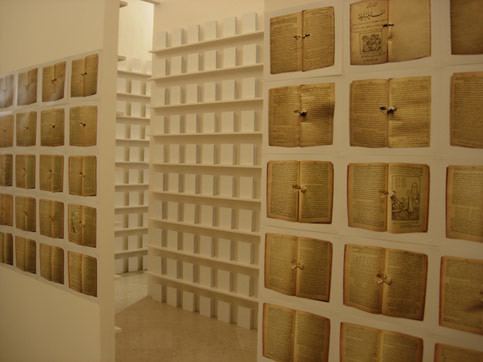
Jacir works in a variety of media including film, photography, installation, performance, video, writing and sound. She has exhibited extensively throughout the Americas, Europe, and the Middle East since 1994, holding solo exhibitions in places including New York City, Los Angeles, Ramallah, Beirut, London and Linz.

Active in the building of Ramallah's art scene since 1999, Jacir has also worked with various organizations including the Qattan Foundation, al-Ma'mal Foundation and the Sakakini Cultural Center. She has been involved in creating numerous projects and events such as Birzeit's Virtual Art Gallery. She also founded and curated the first International Video Festival in Ramallah in 2002, [3]. She curated a selection of shorts; Palestinian Revolution Cinema (1968 – 1982) which went on tour in 2007 [4]. Between 2000 - 2002 she curated several Arab Film programs in NYC with Alwan for the Arts including the first Palestinian Film Festival in 2002. She works as a full-time professor at the vanguard International Academy of Art Palestine since it opened its doors in 2006 and she also served on its Academic Board from 2006 through 2012. Jacir led the first year of the Ashkal Alwan Home Workspace Program in Beirut (2011-2012) and created the curriculum and programming after serving on the founding year of the Curricular Committee from 2010-2011.
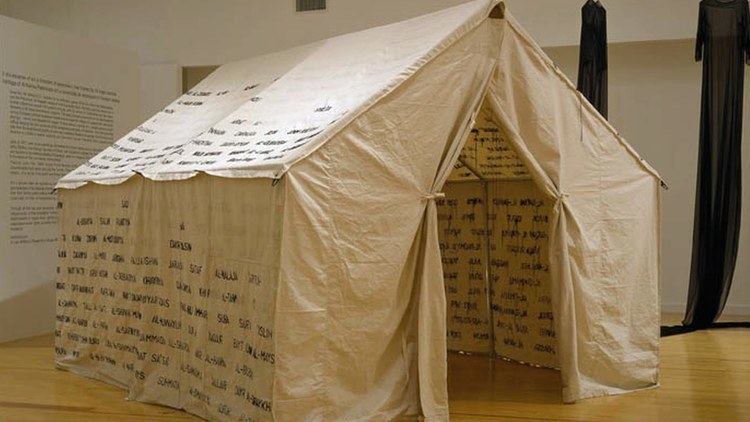
Artist emily jacir brings the palestinian experience to the venice biennale
Recent Juries
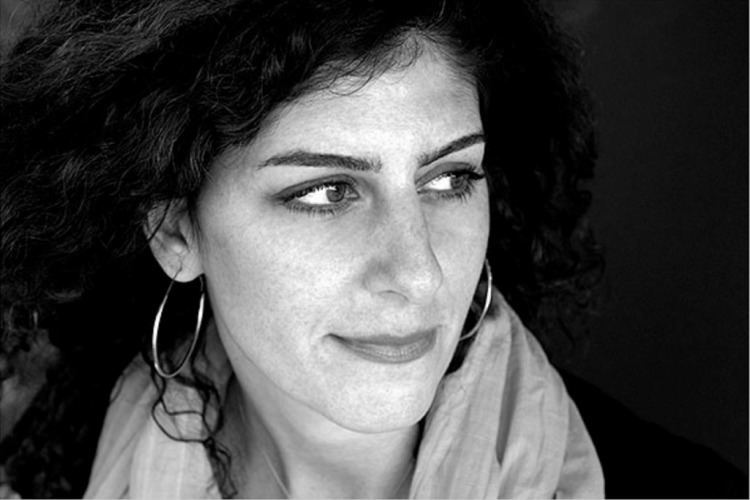
2010 - current: Civitella Advisory Council, Italy

2010 Young Artist of the Year Award, A.M. Qattan Foundation Ramallah

2012 Cda-Projects Grant for Artistic Research and Production, Istanbul, Turkey [5]
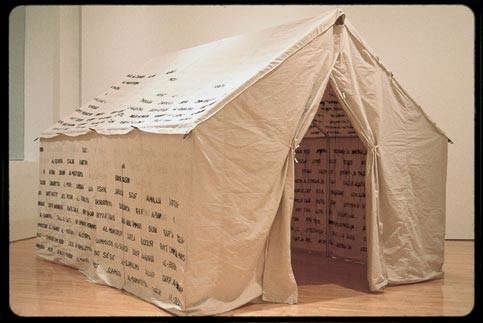
2012 Berlinale Shorts Film Jury, Germany [6]
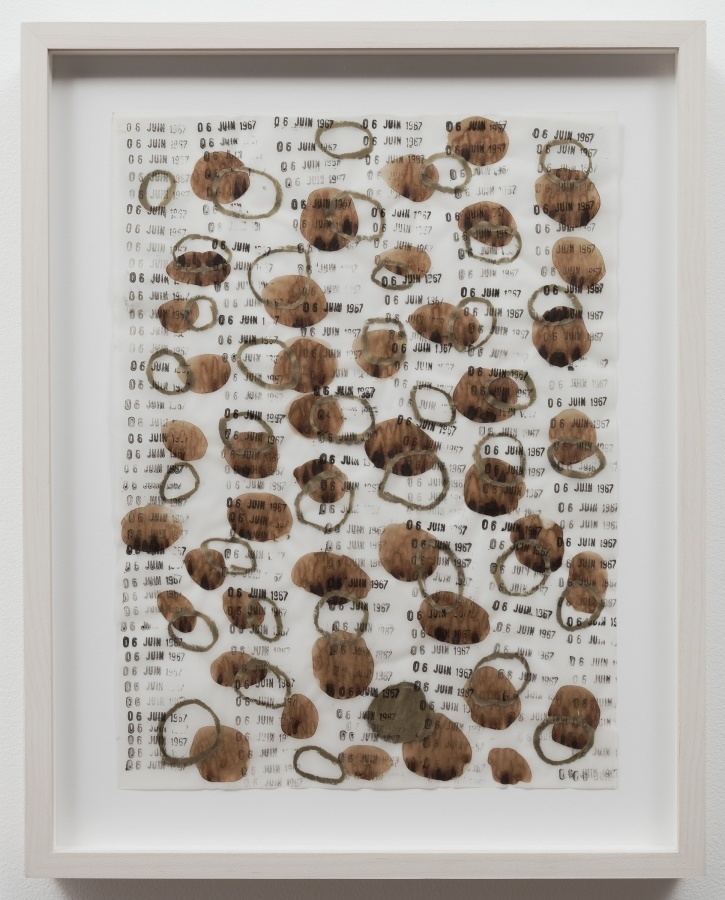
2012 CinemaXXI Jury, Rome Film Festival, Italy [7]
2014 Visions du Reel Festival International du Cinéma, Nyon, Switzerland
Awards
Memorial to 418 Palestinian Villages Destroyed, Depopulated, and Occupied by Israel in 1948 (2001)
Developed during her residency at P.S.1's National Studio Program, Jacir opened her studio to Palestinians, Israelis, Americans, Egyptians, Syrians, Yemenis, Spaniards and others to embroider a refugee tent with the names of Palestinian villages impacted by Israeli expansion.
"Memorial to 418 Palestinian Villages is mobile and vulnerable—resisting any false appeals to closure. It is not a didactic monument, but a sensitive, painful testament to a desperate tragedy that needs to be addressed and aches to be mourned."
Where We Come From (2001-2003)
Jacir, holder of an American passport, asked more than 30 Palestinians living both abroad and within the occupied territories: “If I could do anything for you, anywhere in Palestine, what would it be?” She collected responses and carried out tasks in an extended performance of wish-fulfilment by proxy. The documented result was shown in New York to great critical acclaim; "Where We Come From is [Jacir's] best so far. An art of cool Conceptual surfaces and ardent, intimate gestures, intensely political and beyond polemic, it adds up to one of the most moving gallery exhibitions I've encountered this season."
The work was acquired by San Francisco Museum of Modern Art, which added an extra text to Jacirs work.
Crossing Surda (2003)
"“Crossing Surda” (a record of going to and from work), exists because an Israeli soldier threatened me and put an M-16 into my temple. [Ms. Jacir says she was filming her feet with a video camera at a checkpoint that day.] If I had not had this direct threatening experience this piece would not exist."
Accumulations (2005)
"Ms. Jacir's deft extrapolation of the issues of identity from the specifics of experience, like her renewal and extension of what might be called classic Conceptual Art, is enormously impressive."
Material for a film (2005-ongoing)
"In Material for a Film (2005–ongoing) the displacement is total, as Jacir’s own identity is substituted for that of her subject, Wael Zuaiter, a Palestinian intellectual living in Rome who was assassinated in 1972 by Israeli agents, having been mistakenly identified as one of those responsible for the murder of Israeli athletes at the 1972 Olympics in Munich. The installation gathers together photographs, books, music, letters, interviews, telegrams, copies of the Italian magazine Rivoluzione Palestinese to which Zuaiter contributed, even a clip from a Pink Panther film in which he had a small part, to flesh out a life no longer there."
"Jacir is a quiet and mercurial art-world figure, less than a decade deep into her career, and her Boss show rejects the obvious opportunity presented for leverage, debutante-style, as a headliner on the New York art stage and in the media that starts here. In fact, the only character in sharp focus for this exhibition is Wael Zuaiter, a Palestinian intellectual killed by Israeli secret service agents following the murder of eleven Israeli athletes and a German police officer by the militant group Black September at the 1972 Munich Olympics."
Howard Halle criticized the pieces in an article in Time Out New York, writing, "That such a crude, self-indulgent exercise has been given one of contemporary art’s most prestigious awards is unfortunate, though not, sadly, entirely unexpected." Another critique by Ken Johnson of the New York Times said that, "If the ultimate point is to arouse humane concern for Palestinians in general, Ms. Jacir's work falls short."
Retracing bus no. 23 on the historic Jerusalem-Hebron Road (2006)
stazione (2009)
In 2009, Jacir participated in the Venice Biennale in the Palestinian Pavilion. She created a site-specific public project to take place in Venice during the Biennale. The Venice City Authorities shut down Jacir's project and refused to allow it to take place.
"Significant by its absence at the Venice Biennale was Emily Jacir's contribution to the official off-site exhibition, 'Palestine c/o Venice'. Jacir's artwork, Stazione, would have seen all of the piers for the Route 1 water bus (the vaporetto that runs up and down the Grand Canal) display the stop location names in Arabic as well as the usual Italian. Mockups were made, the Biennale approved, the council approved and the vaporetto company that runs Route 1 approved. Then suddenly it didn't. Apparently the vaporetto company stopped the project, and all the artist could find out, second-hand, was that they had 'received pressure from an outside source to shut it down for political reasons'."
"Emily Jacir’s stazione (2008 - 2009) is an unrealised intervention on the number 1 vaporetto (water bus) line, a main transport route along the Grand Canal beginning at Lido winding its way to Piazzale Roma, ferrying audiences from one Biennale exhibition to another, by inserting Arabic text supplementing the existing Italian names at vaporetti stops and thus making the route bilingual. In the artist’s explanation, the work references the numerous Arab influences and exchanges in the history of Venice, its architecture, manufacturing, shipping, and of course in the process of these activities, language - that Arabic words too have filtered into the Venetian dialect - ‘divan’, ‘damasco’, ‘gabella’, amongst others."
Museums
Museums where her work has been shown:
The main gallery in the US that shows her work is Alexander and Bonin in NYC (212.367.7474)
Biennales
International biennales which have featured her work:
